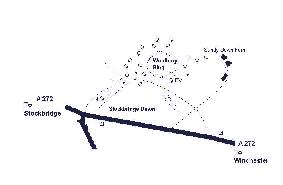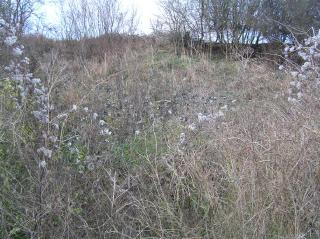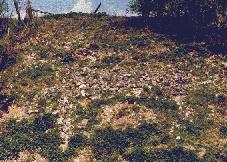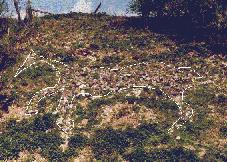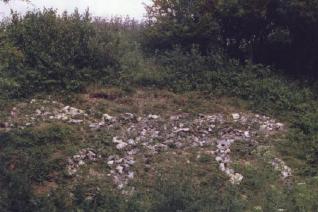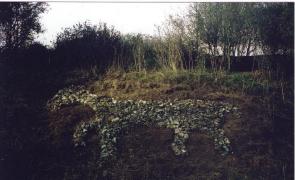Woolbury Horse
General Information
National Grid Ref SU 3816 3518
This horse is situated on the southern ramparts of the Woolbury ring (1 mile east of Stockbridge) just outside of the National Trust property. This figure is not particularly prominent on the countryside visible only really from the camp itself. The horse is well preserved in shape only a few flints being misplaced, mainly from one of the hind legs and the tail. It has been recently cleared from surrounding bushes. It is in poord condition but needs a bit of work to restore it to its former glory. The cross was built a few yards from the main Winchester road. However this was lost in 1944.
History.
Very little is known about this little horse (27 ft long), it was made before 1846, crudely constructed of rough flints painted white. These are pushed lightly into the ground to form the shape of a horse. There was also a cross nearby. Local legend says that this cross marks the spot where a farmer called Wigmore was killed, and his horse carried on to the site of the Woolbury horse where it died and the White horse was constructed to commemorate this. Another legend states that it was made to commemorate the a highwayman who prowled the area. Another legend and the one with some plausibility is that W.P Powlett of Sombourne House had a representation of a White Horse cut into the east side of Woolberry. This was becasue he refused to stop for a highway man and his horse was shot, continuing to the side of Woolbury Ring and died, but it saved its rider and was created to record this event. The horse was restored and whitewashed in 1929 and subsequently the two legs were altered to form four. However local legends are usually subject to distortion and this story is probably far from the real reason for the construction of the cross and horse.
Maps
Photo's
2005 Looking overgrown
The Woolbury Horse in the 1930's
The Woolbury Horse as Discovered in 1998
The Woolbury Horse in 1999 after clearing of the site
Photo Reproduced With the Kind Permission of David Johnson
Aerial Photo

Reproduced with the Permission of the RCHME
Many Thanks to David Stephenson and Jennie for showing me the horse.
